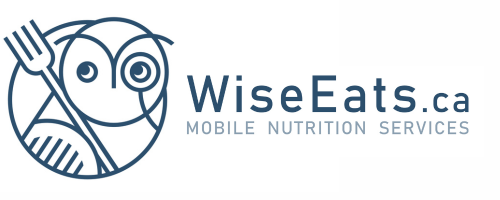Eating disorders are behavioural conditions that are characterized by irregular eating behaviours, thoughts and attitudes towards food, eating and body image. Eating disorders may be used as a way to feel in control or to cope with difficult situations.
Eating disorders are serious conditions which require medical attention from a licensed healthcare professional.
Eating disorders can affect anyone, of any age, gender, or sexual orientation. Many eating disorders are often associated with the presence of a mental illness, while some eating disorders are considered mental illnesses.
Approximately 1 million Canadians have been diagnosed with an eating disorder. Additionally, children in Canada are 2 to 4 times more likely to develop an eating disorder than type 2 diabetes.
Why is this so important? Becuase, eating disorders can increase your risk of health complications such as, heart disease, anemia and kidney disease.
Understanding the different types of eating disorders, and the underlying physiology can help you to identifty eating disorders in both yourself, and in loved ones, and provide support.
Types of Eating Disorders
There are many different types of eating disorders, each one with different characteristics. You can find a list of some of the most common eating disorders below, along with some of the common signs of these disorders.
Anorexia Nervosa
Anorexia nervosa is one of the most common eating disorders. People with anorexia nervosa have an intense fear of weight gain and typically limit the number of calories they eat each day, as well as the types of food they eat. Some, but not all people with this eating disorder engage in purging behaviours.
Signs and Symptoms
Some of the signs and symptoms that characterize anorexia nervosa include,
-
- Poor weight gain, severe weight loss, or trouble maintaining an appropriate weight
- Limiting the number of calories eaten in a day
- Limiting the types of food in diet
- Compulsive exercising
- Purging
Bulimia Nervosa
Bulimia nervosa is another eating disorder associated with mental illness. In bulimia nervosa, people go through periods of food restriction, followed by a period of unrestrained eating known as binge eating.
After the binge eating period, people with bulimia nervosa experience a period of purging to compensate before beginning the cycle again. Purging can look different for everyone and can include excessive exercising, vomiting, fasting and the use of laxatives.
Signs and Symptoms
Signs and symptoms of bulimia nervosa can be physical, emotional or behavioural. Although there is a long list of potential signs, some of the common ones include,
-
- Skipping meals or eating small amounts
- Trying fad diets
- Changes in teeth colour, and increased
- Avoiding typical activities with friends
- Frequent changes in weight
Binge Eating Disorder (BED)
This type of eating disorder gets its name from the pattern of eating. People with binge eating disorder (BED) experience periods of eating large amounts of food, usually to the point of discomfort. This type of eating disorder is similar to bulimia nervosa however, there is no period of purging.
People with BED typically binge at least once a week, for 3 months. During episodes of binge, they experience 3 or more of the following,
-
- Eating faster than normal
- Eating to the point of discomfort
- Avoiding eating with other people due to embarrassment
- Eating large amounts of food, even when not hungry
- Feeling guilty after eating
Signs and Symptoms
Like other eating disorders, there are many signs and symptoms that characterize binge eating disorder. Some of the more common signs include,
-
- Changes in weight
- Changes in normal eating behaviours, such as skipping meals or fasting
- Fear of eating in public settings
- Eating lots of food in a short time
- Storying foods in unusual places
- Excessive concern around body weight and/shape
Avoidant Restrictive Food Intake Disorder (ARFID)
ARFID was previously known as “selective eating disorder” and is a relatively new category of eating disorders. People with this disorder limit the amount or type of food they eat however, are not fixated on their weight or body shape. Due to restricting the amount or types of foods they eat, people with this eating disorder do not consume enough calories to meet their body’s needs. In young children, this can negatively impact growth and development, and health status.
People with intellectual disabilities, ADHD, or an autism spectrum condition are more likely to have ARFID.
Pica
Pica differs from many of the other eating disorders, in that it’s often not tied to body image. This type of eating disorder is characterized by the desire to eat non-food items such as dirt, for more than one month.
You can learn more about pica from the national eating disorder information center.
How Do I Tell If I Have An Eating Disorder?
Although you may check off many of the signs or symptoms of an eating disorder, this does not necessarily mean you have an eating disorder. You should also consider factors such as,
-
- Are you always thinking about food and your weight?
- Do you feel out of control around food or when eating?
- Do you feel guilty after eating?
- Are you trying to reach a goal weight?
Studies show that the members of the BIPOC community have a higher risk of developing an eating disorder than other communities.
Speaking with your doctor or a registered dietitian can help you identify whether your eating patterns meet the criteria for an eating disorder. They can also provide you with resources and referrals to help you address your concerns.
Don’t forget to also check out these helpful prompts for ED recovery.
How is an Eating Disorder Different from Disordered Eating?
Disordered eating is a term that is used to describe eating patterns that may be restrictive, compulsive, irregular or inflexible. One of the most popular and accepted forms of disordered eating is dieting. Although people with disorder eating have similar signs to many eating disorders, they do not meet the minimum criteria for official diagnoses.
Are Your Eating Habits Impacting Your Health?
Not sure if you have an eating disorder? Book a FREE discovery call with a Reigstered Dietitian to learn more about the impact of your eating habits on your health and changes you can make.
References
Anorexia Nervosa. (n.d.). National Eating Disorders Association. Retrieved May 20, 2022, from https://www.nationaleatingdisorders.org/learn/by-eating-disorder/anorexia
Avoidant Restrictive Food Intake Disorder (ARFID). (n.d.). National Eating Disorders Association. Retrieved May 20, 2022, from https://www.nationaleatingdisorders.org/learn/by-eating-disorder/arfid
Binging but not Purging: How to Tell Bulimia Nervosa and Binge Eating Disorder Apart. (n.d.). Monte Nido. Retrieved May 20, 2022, from https://www.montenido.com/bulimia-nervosa-and-binge-eating-disorder/
Binge Eating Disorder. (n.d.). National Eating Disorders Association. Retrieved May 20, 2022, from https://www.nationaleatingdisorders.org/learn/by-eating-disorder/bed
Bulimia Nervosa. (n.d.). National Eating Disorders Association. Retrieved May 20, 2022, from https://www.nationaleatingdisorders.org/learn/by-eating-disorder/bulimia
Eating Disorders. (2014). Canadian Mental Health Association. https://cmha.bc.ca/documents/eating-disorders-3/
Eating Disorders in Canada – NIED. (n.d.). National Initiative for Eating Disorders. Retrieved May 20, 2022, from https://nied.ca/about-eating-disorders-in-canada/
Health Consequences. (n.d.). National Eating Disorders Association. Retrieved May 20, 2022, from https://www.nationaleatingdisorders.org/health-consequences
Pica. (n.d.). National Eating Disorders Association. Retrieved May 20, 2022, from https://www.nationaleatingdisorders.org/learn/by-eating-disorder/other/pica
With a Bachelor of Science in Nutrition and Food Science, Rachel has over 15 years’ experience helping people address their health through nutrition.


